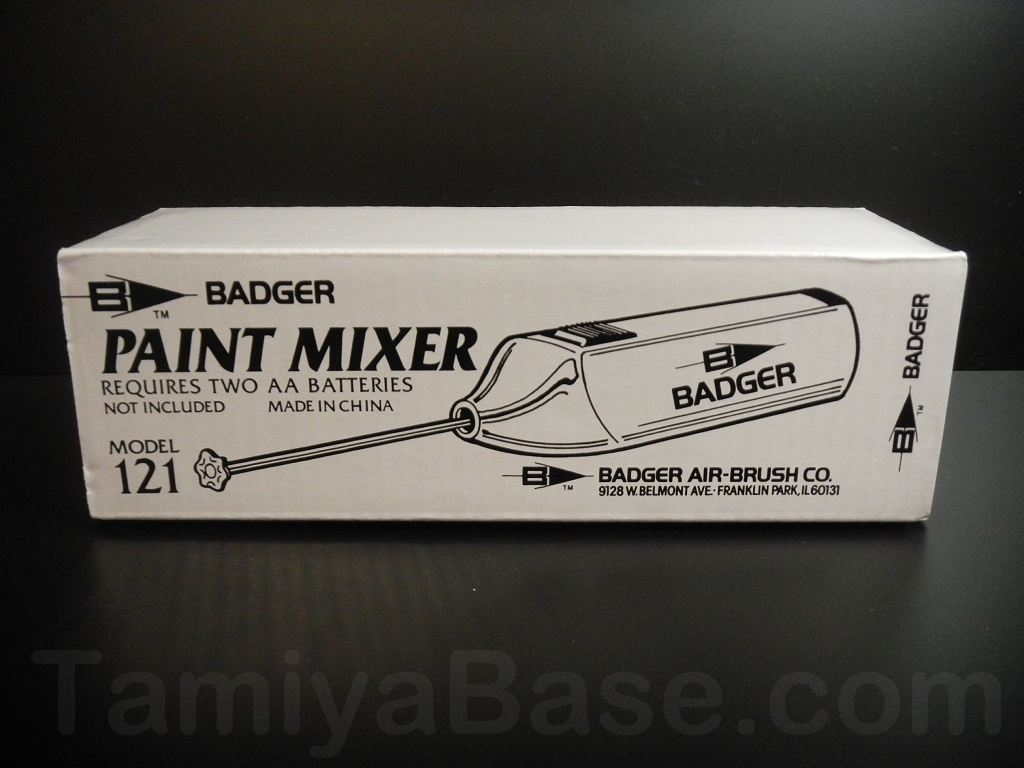Introduction
The Badger Paint Mixer (model 121) is an old design, this means it’s been proven and refined over time. But on the other hand, it does mean it’s been subjected to cost saving tweaks - the illustration on the box is no longer a good representation of the housing of the actual unit, for example.
The mixer can be bought for around 20 GBP, posted – not a pricy bit of kit by any means, but it still needs to perform better than stirring or shaking by hand.
I don’t have a mechanical shaker to make comparisons with, so the testing will not be as complete as I would have liked.
Unboxing
The Badger 121 comes in a satin white corrugated card box, printed in black on the ends & one face.
Inside is the motor/battery housing, the impeller and shaft, and an instruction sheet. The latter doesn’t really include anything that isn’t common sense, anyone capable of holding a fork unaided should be able to fit the impeller to the motor shaft and install the two AA size batteries required.
I did note that it did include the phrase “not recommended for children under 12”. This probably comes from a fear of being sued, but I don’t know that this sort of infantilisation is really does our species any good, long term. I was using glues, craft knives and Airfix enamel paints age 5 (if not before), unsupervised, and I don’t remember anything terrible happening.
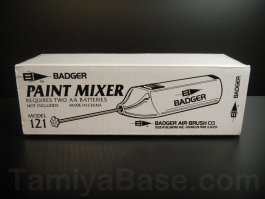 |
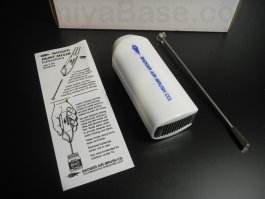 |
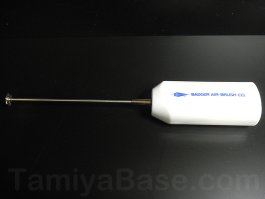 |
Test #1: Easy
I started with an easy test – mixing a very new 10ml jar of X-14 Sky Blue that had settled out. Note the way the pigment had settled out (side view) leaving the clear blue carrier portion on top. Using the Badger mixer, the paint was visibly better within 1 or 2 seconds, and I would say completely remixed in 3. I carried on to approximately 20 seconds, but all that seemed to do was introduce bubbles. This was probably due to my exploring possibilities rather than following the instructions – the design of the impeller means going to the bottom and getting close to the “corners” of the jar gives the best results, you don’t need to go right to the top of the jar.
I did notice right from the start that the noise the unit makes is irritating, and the vibration made my hand feel weird for some time after. The switch is clunky, and doesn’t really need to stay held in the “On” position – but it is possible to just hold it at the point the motor is spinning.
Cleanup is a bit of a pain, requiring the use of the correct thinners to get into all the nooks and crannies of the impeller, and clean the shaft properly – a simple tissue of bit of cloth will not suffice.
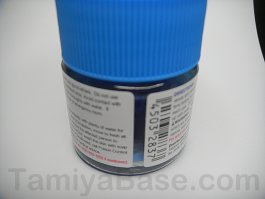 |
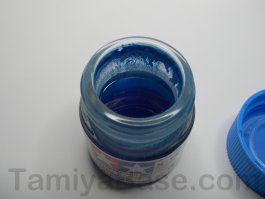 |
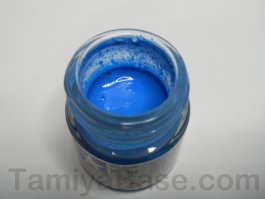 |
Test #2: Moderate
My next test was a little more difficult – mixing a 23ml jar of PC-18 Metallic Purple that had been stored (sometimes on it’s side) since being made up to 30 years ago.
After some difficulty getting the jar open, I reincorporated the paint on the upper edges of the sides of the jar, and cleaned up the inside of the lid.
Mixing took a lot longer than on the previous test, and I think part of that was to do with the bigger jar. I added 2ml of X-20A thinner to replace evaporative losses over the years, but this type of paint (in its brushable form) is meant to be thicker and stickier than the X / XF types.
After less than a minute, there was no reason - taste aside - why I couldn’t use the paint now, though it has to be said that I did experience more splatter than from the previous test.
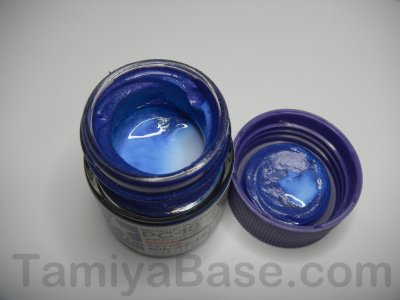 |
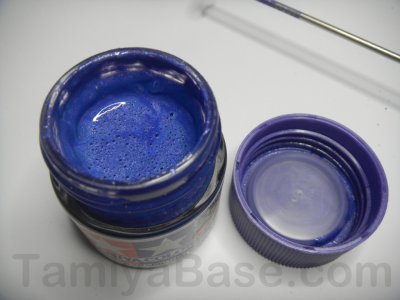 |
Test #3: Extreme
Moving on, I wanted to give the Badger 121 Mixer the sternest possible test – not only mixing Tamiya X-18 Semi Gloss Black, but having it actually go on semi gloss, not gloss, matt, or, as is normally the case, a streaky mix of both.
This was an old (possibly 20 years), part used jar, and you can see that the result is by no means perfect – but for 20 seconds of mixing, unthinned, with no surface preparation, and just the one coat, over brushed at a 90-degree angle while still wet, I have to say that it’s still quite possibly the best result I’ve ever had with this sort of paint.
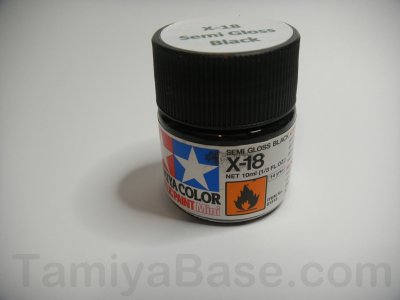 |
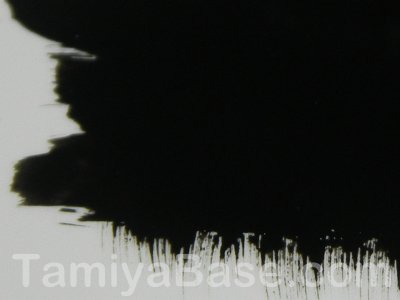 |
Conclusion
Previously, I really thought that this device was something of a gimmick, doing little more than separating the gullible from a small amount of money.
Having bought and used one though, I have to say that it’s a great improvement over my usual stirring by hand with a cocktail stick, thoroughly remixing new but settled out paints in seconds, and restoring old paints to a useable state with very little effort.
I’ve noted many neutral points below – two of those are down to how the mixer is used, let’s call it “technique sensitive”. A third is really down to the nature of the device – if you’re going to submerge part of it in paint, then proper cleanup of any reusable device is going to be needed.
| Positives: | Neutral: | Negative: |
|
• Extremely effective, very quickly. |
• Potential for frothing; • Need for thinner cleanup after use; • Build quality feels a bit cheap. |
• Irritating noise & vibration. |
Despite the somewhat cheap feel and irritating vibration, the Badger Paint Mixer (Model 121) is an extremely effective tool, and gets a 5 out of 6 score from me.

(See our notes on rolling the dice.)
__________________________
Written by TB member Jonny Retro

